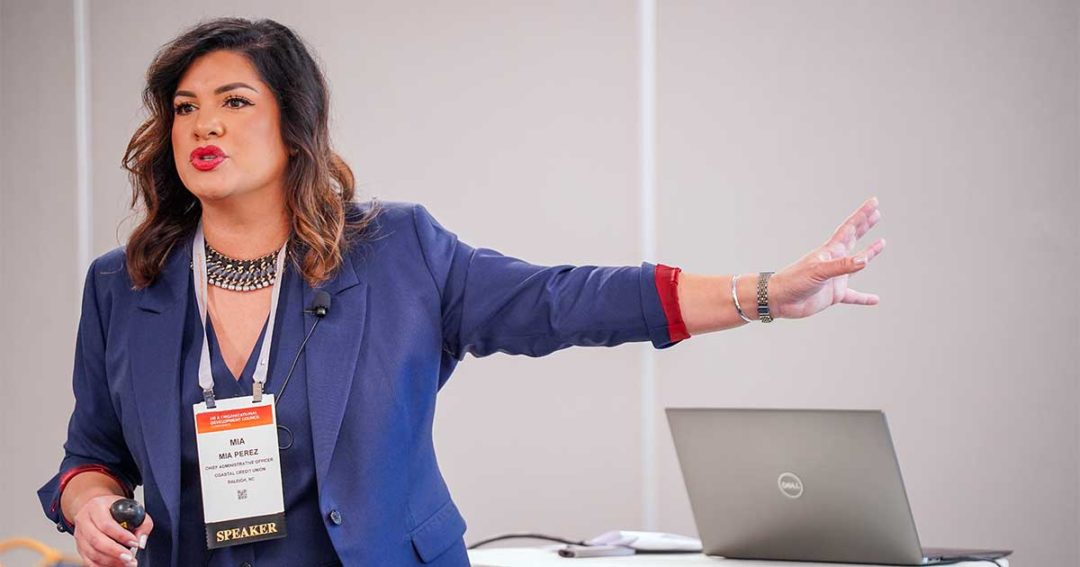
Bridge the skill gap
How to address gaps in performance and set employees up for success.
People can’t always see themselves objectively. Therefore, many employees can’t see the skill gaps holding them back from advancement.
As Mia Perez, chief administrative officer at $5 billion asset Coastal Credit Union in Raleigh, N.C., says, “just because one is a really good ‘x’ doesn’t mean they’re going to be a really good ‘y.’ The gap between where emerging leaders are and where they need to be is wider than ever. Many up-and-coming high performers are ill prepared for promotions due to unaddressed skill gaps.”
It’s up to human resources (HR) professionals to identify these gaps, communicate with the employee, and help them bridge the gaps and grow their career.
“Sometimes we need to pause and learn to sharpen the skill set and move forward,” says Perez, who addressed America’s Credit Unions’ 2024 HR & Organizational Development Council Conference Tuesday in St. Pete Beach, Fla. “Be patient with your teams and own the fact that you’re the coach, and you’ll be the superstar HR professional you are.”
To bridge leadership gaps, HR professionals must determine the skills required to lead their credit union. Citing the 2007 leadership skills strataplex model, Perez shares the four key leadership skill sets:
- Cognitive. What can people do, and how do they process information?
- Interpersonal. How is their social perceptiveness, and how do they interact with and influence others?
- Business. What’s their functional expertise, and how do they manage material resources?
- Strategic. What’s their vision for the future? Do they have the conceptual skills to map the path toward their vision?
Few employees enter their careers with all of these skill sets, says Perez, referencing a Forbes study that found 1% of people are born leaders.
“The rest of us have to learn it,” she says. “It’s a required skill set, and it can be taught. We’re required as stewards of organizational talent to ensure we’re not just bringing on people with the skill set, but we’re nurturing them so we keep them and they continue to be strong performers.”
When employees aren’t performing their best, be clear about where they can improve. When evaluating employees, Perez suggests HR leaders take an objective approach by asking managers to describe someone who’s exceptional in the role. Ask them to write down five bullet points that would make someone a master of this role.
Then, have the manager look at the bullet points and ask themselves, “How does the person in question perform in each one of these five?” Have them give a rating on a scale of 1 to 10.
Finally, acknowledge where the employee has gaps and ask the manager, “What would the person have to do to move from a 2 to a 10? Give me five bullet points on that.”
“We’re getting into objective performance management,” Perez says, noting that adding context to objective measures provides evidence that’s valuable in coaching the employee. “So, when you say, ‘You’re not a responsible professional,’ add ‘I say that because your meeting started at 9 a.m. and you came in at 9:30 a.m.’”
The “I say that because” statement is essential to give the employee clarity and definitive areas of improvement. If the gaps are obvious, everyone involved can start bridging those gaps and build a better employee and organization.
“It’s critical for us to help people understand that what got you here will not get you there,” Perez says, encouraging HR leaders to remind employees that “a paycheck is a partnership. The more you’re paid, that higher pay is because the responsibility has escalated. It’s our job to set these folks up for success."